| When I first got this lens it was specifically to photograph Roe Deer in the woods whilst on the move, as my main lens at the time was a 400mm f5.6 – too slow for this kind of job. The lens turned out to be ideal for the job, small, lightweight, easy to use and with the IS and f4 aperture giving it an advantage in the gloomy woodlands. Because of its specific role, this review is limited to this particular experience but having found few in the way of reviews for this great little lens, I thought it would still be of value to add mine. |
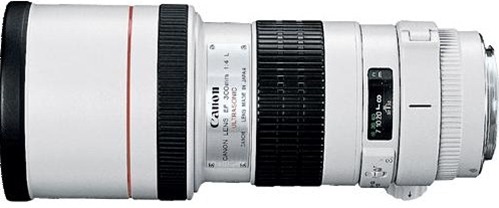 |
Image QualityI’m not one for ‘pixel peeping’ – if the images look good and sharp, then that is what I go by – to this end this lens seems on par with the Canon 400mm f5.6 lens I also have and have reviewed. Basically, it seems like a 300mm f4 version of the 400 but smaller and compact. Shooting with this lens as I do in woodland means I almost exclusively shoot with it wide open at f4 which, like its bigger sibling, remains very sharp. I’ve rarely stopped it down to find out how much better the quality is as I’ve not felt the need to, plus the lighting conditions rarely give me this opportunity and with much of my wildlife photography I like to through the background as much out of focus as possible, which at the f4 it helps to do. |
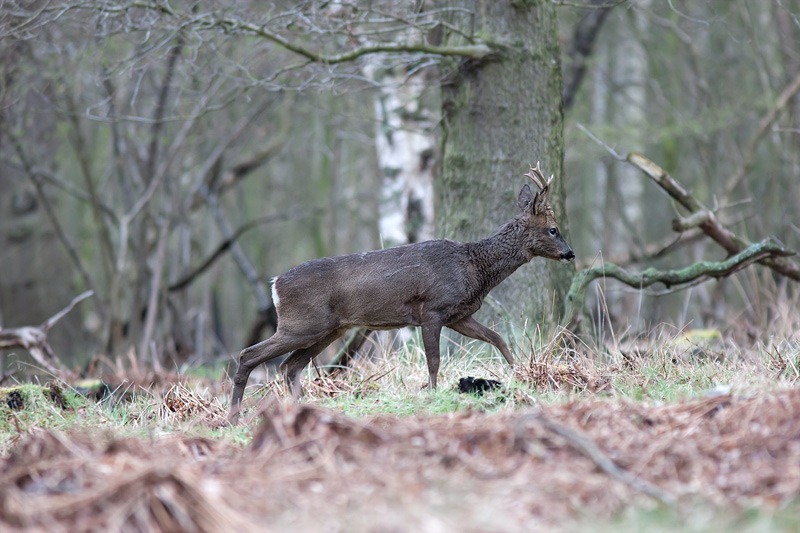 1/400 sec f/4.0 ISO 800 Canon EOS 30D |
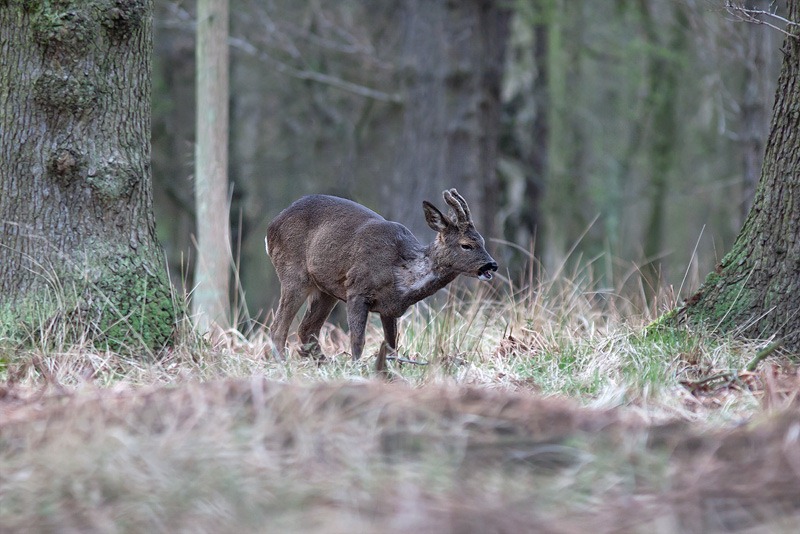 1/320 sec f/4.0 ISO 800 Canon EOS 30D |
 1/800 sec f/4.0 ISO 1600 Canon EOS 30D |
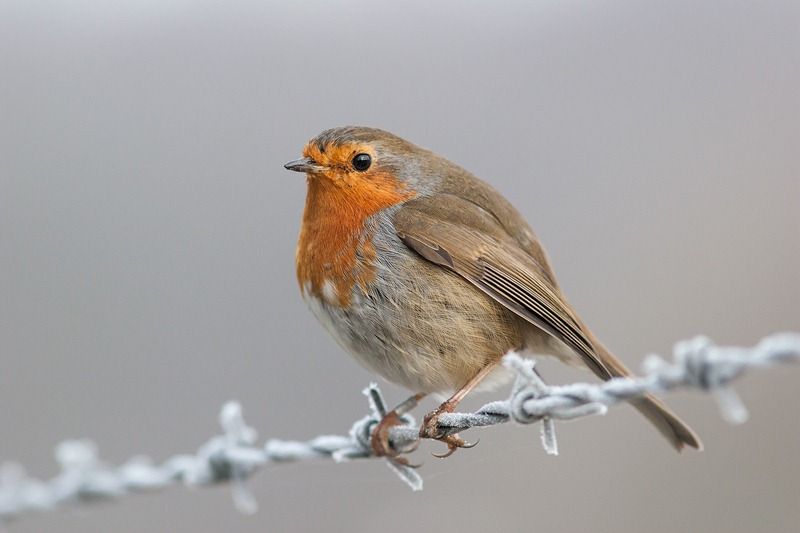 1/800 sec f/4.0 ISO 800 Canon EOS 30D |
| Not really for photographing birds, but in winter some birds and animals can be quite tame when tempted by some food (un-cropped) |
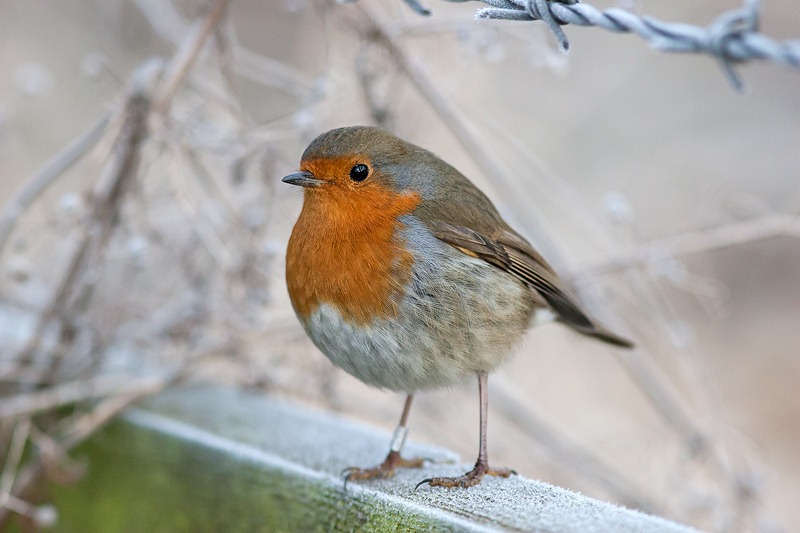 1/1600 sec f/4.0 ISO 1600 Canon EOS 30D |
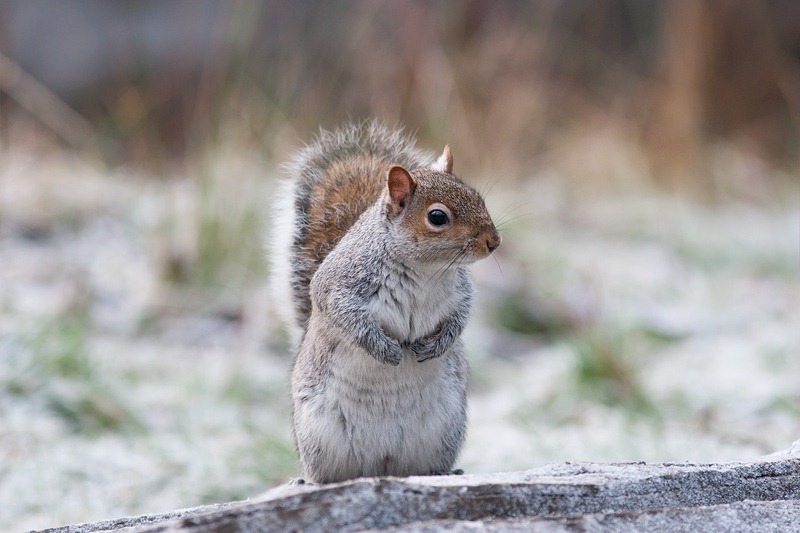 1/320 sec f/4.0 ISO 800 Canon EOS 30D |
With a x1.4 teleconverter (Kenko Pro 300)Although quality takes a slight hit, it is still very good with the Kenko Pro 300 that I have used on this and gives a focal length of 420mm (on a 1.3x crop camera). Down to f5.6 it’s like having the Canon 400mm f5.6 but with IS, though image quality won’t be as good and focusing is slower, though the pins shouldn’t have to be tapped to achieve this. |
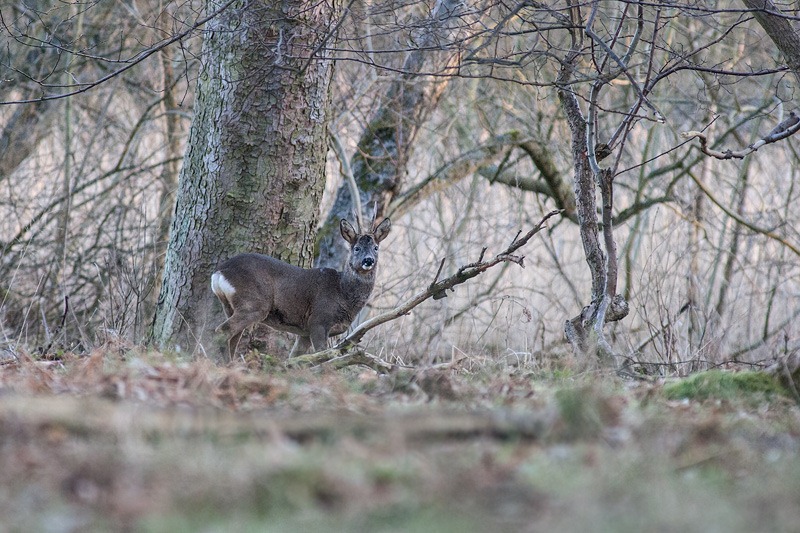 1/400 sec f/5.6 ISO 3200 Canon EOS-1D Mark III + x1.4 Converter |
General useWhat I like about this lens is that you can simply have it attached to your camera and slung over your shoulder, ready for use at a moments notice, ideal for a surprise encounter with a Roe Deer. Because of this, I’ve taken some of my best image of this animal using the lens. With the time and movement it would take a larger lens to do the same job and the moment could be lost. It has a sliding out, built in lens hood to protect the front element from damage and of course flare. The image stabiliser whilst not as effective as later Canon lenses, does it job, at least for my purposes. With it being able to focus down to 1.50 metres, it can be used as a close focus lens – not exactly macro – but still quite useful. I haven’t used it for birds in flight but it would certainly be up for the job. However, at 300mm you would need to get quite close and with a converter on, it would slow it down.
ComparisonsCanon 400mm f5.6 – I’ve heard people consider this instead of the 400mm lens by adding the x1.4 converter which would give you the versatility of also having a 300mm but a focal length of over 400mm with the converter. Although you would get IS focusing speed would go down as would image quality slightly. You’re likely to use it more with the converter on so, at around the same price of the 400mm f5.6 you may as well just get that unless you feel you are going to use it bare at 300mm a lot. Canon 300mm f2.8 – I very nearly got this lens once but went for the Sigma 500mm f4.5 instead (which I don’t regret). This other Canon 300 has a reputation of being one of the fastest and sharpest of all of Canons white primes but at five times the price it would be out of reach for many. It also has a reputation for taking a x2 converter very well, something I’m not sure the f4 version would do. Obviously it’s much heavier but the latest version does have a much better IS. If money wasn’t an issue, I would certainly own that lens. There are other comparisons out there but they are either much more expensive (the Sigma 300 2.8 or 100-300 2.8) or cheaper priced zooms i.e. the various 70-300mm, but these tend to be slower focusing and have a slower aperture of 5.6 (though have IS). I had one of these lenses and I was not impressed.
Negatives?I’ve found none that come to mind in using this lens.
ConclusionFor me I think this lens has a particular ‘niche’, in my case it’s almost solely used for photographing deer in gloomy woodland. As far as wildlife is concerned, it doesn’t otherwise have enough reach for me. Interestingly, there are quite a number of people using the Canon 300 2.8 to great effect in using it for wildlife photography but not many with this lens. One, however that does, is a very impressive photographer Allon Kira particularly his Kingfisher shots. Koen Devos even manages to get some amazing ‘macro’ images out of his lens. |
Subscribe to:
Posts (Atom)





Thank you. Glad it was useful for you.
ReplyDeleteFrank
thanks great review
ReplyDelete